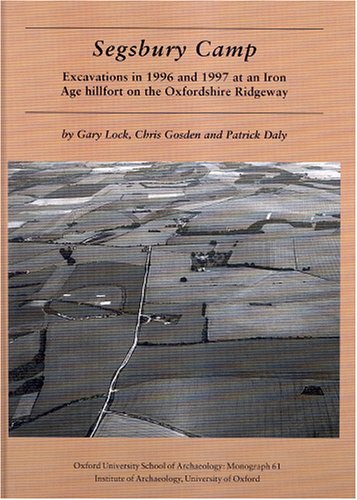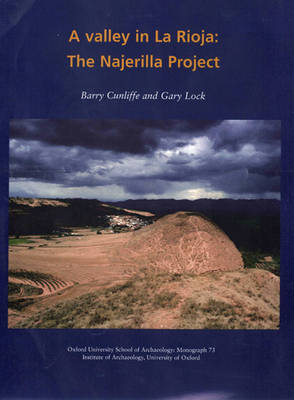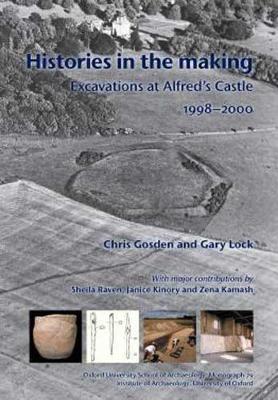Oxford University School of Archaeology Monograph
4 primary works
Book 33
"Digging numbers" is written as a gentle introduction to statistical methods for archaeologists at all levels. It is not a theoretical textbook, but a usable manual aimed at getting people to try statistics for themselves. Sections 1 and 2 work through the most popular techniques of descriptive and inferential statistics. A data set describing 40 spearheads is introduced at the beginning of the book and then used to illustrate each statistical procedure. Tests are worked through by hand with corresponding computer programmes written in SPSS/PC+ and MINITAB listed in Section 3. Section 4 presents a catalogue of statistical software itemizing cost, contents and other useful details of each package. A comprehensive list of specifically archaeological statistical software is included in the catalogue.
Book 61
This volume describes the two seasons of excavation at Segsbury Camp which form a part of Oxford University's Hillforts of the Ridgeway Project . It contains background material and a series of interpretations of the site at different scales finishing with a discussion of the Lambourn Downs landscape in later prehistoric and Romano-British times. The evidence suggests that the large hillfort of Segsbury was used during the period 6th to 2nd century BC but was not densely and permanently occupied. It also seems that Segsbury was constructed in a new and previously unused area of the Downs. Alternative interpretations are explored within a framework of trying to understand what is meant by 'community' and how Segsbury interacted with other hillforts in the area. The detail provided by the excavation of several hillforts on the Lambourn Downs suggests that they were different forms of monument and argues against trying to understand hillforts as a single category.
Book 73
The Najerilla flows from the mountains of the Sierra de la Demanda to the River Ebro in the western part of the province of La Rioja in northern Spain. Here fieldwork and excavations from 2000-2003 examined the varied landscapes of the valley and focused on the excavation of two Iron Age hilltop settlements, Castillo Antiguo and Cerro Molino. The work on Cerro Molino was the most extensive and exposed close-spaced buildings of mud-brick and timber belonging to the Celtiberian period (fourth-second centuries BC) but both hilltops were occupied in earlier periods from the seventh to the fifth centuries. Full reports are given of the structures, material culture and economy of the settlements together with accounts of extensive field-walking undertaken in the vicinity. The report concludes with a wide-ranging overview of the archaeology and history of this hitherto little known area.
Book 79
Alfred’s Castle is a small enclosed site south of the Ridgeway on the Berkshire Downs, excavated between 1998 and 2000 by a team from Oxford University. This was the third site excavated by the Hillforts of the Ridgeway project (after White Horse Hill and Segsbury). Although small, Alfred’s Castle displayed a long and complex history, starting with early Bronze Age round barrows on which later Bronze Age linear ditches were aligned, these in turn were used to form enclosures in the Iron Age. In the early Roman period a small villa house was built inside the smaller enclosure, which then shows some use in the early medieval period. The long use of the site raises questions of memory, history and continuity, leading us to wonder how earlier phases of use affected later ones. This volume contains the results of excavations at Alfred’s Castle and an account of an art project by Simon Callery. This is the third volume dedicated to our hillfort excavations on the Berkshire Downs and it ends with an account of the area more broadly, which sees complicated developments from the Bronze Age into the medieval period through the constructions of barrows, field systems, linear ditches and sites of various forms and sizes. How these combined into communities of the living and of the dead are considered using all the evidence currently available.



